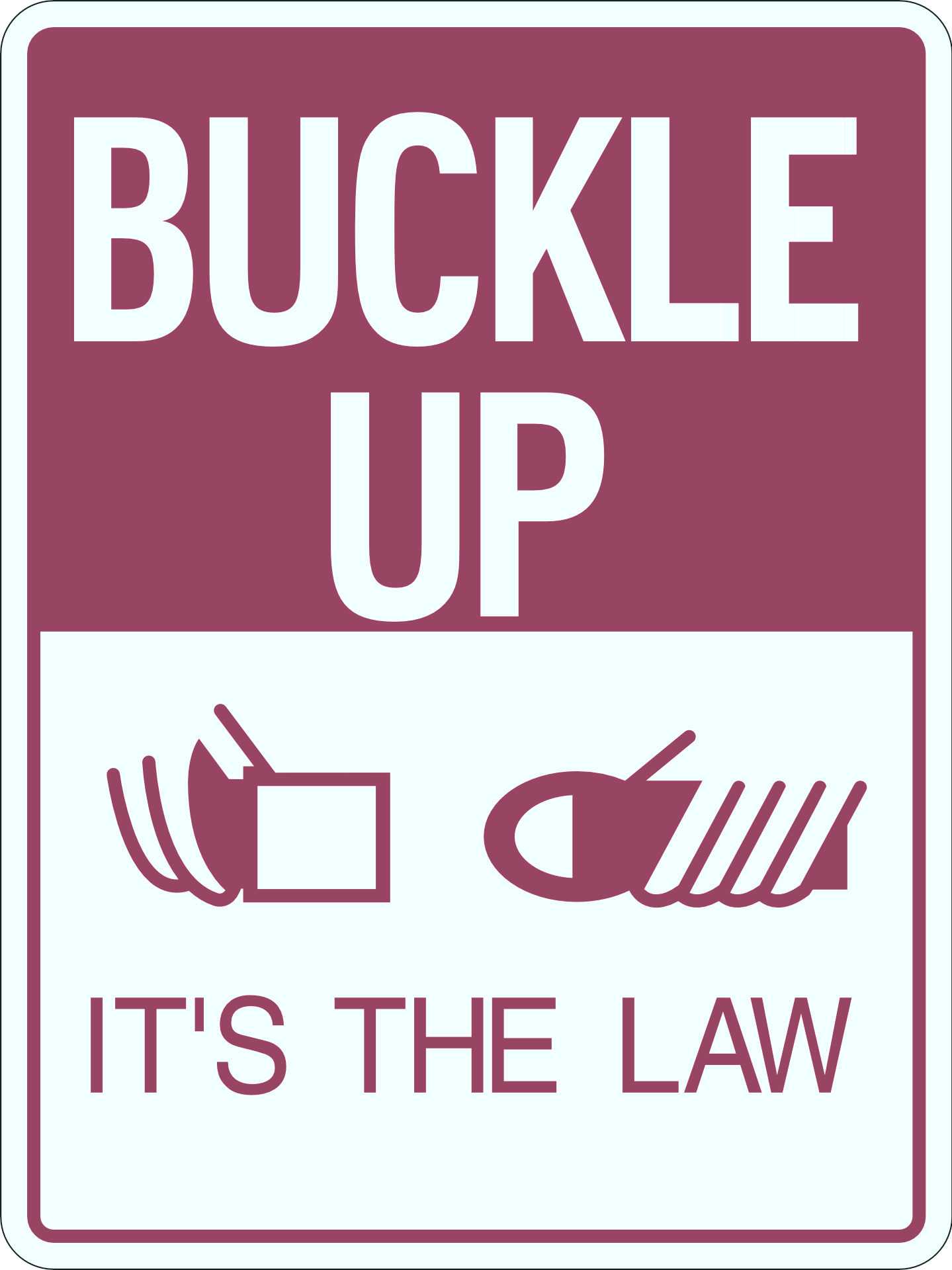Trucking Laws and Regulations governing the Multi-Billion Dollar Industry.
Laws and regulations give structure to the society we live. Nearly everything we do is governed by some set of rules. There are rules for games, for social clubs, for sports and for adults in the workplace. There are also rules executed by morality and custom that play an imperative part in telling us what we ought to and ought not to do. However, some rules, those made by the state or the courts are called "laws". Laws resemble morality because they are designed to control or alter our behavior.
But unlike rules of morality, laws are enforced by the courts; if you break a law, whether you like it or not you may be forced to pay a fine, pay damages, or go to prison. This article is intended to delve in to these laws that govern and impact the trucking industry. There are literally hundreds of regulations that apply to trucking and carriers. The federal body that oversees regulations is the Federal Motor Carrier Safety Administration (FMCSA), which is part of the U.S. Department of Transportation.
In order to drive big rigs, one requires a commercial driver's license to operate. Attainment of a CDL requires additional schooling and training dealing with the special knowledge requirements and handling characteristics of such a large vehicle. In addition to this truck drivers of commercial motor vehicles must adhere to the hours of service, which are regulations governing the driving hours of commercial drivers, which was fairly new and made mandatory to be monitored according to the ELD Mandate. These and all other rules regarding the safety of interstate commercial driving are issued by the Federal Motor Carrier Safety Administration (FMCSA). Some other issues are handled by another branch of the USDOT, such as the Federal Highway Administration (FHWA).
With hundreds of laws and rules governing this industry, we selected a few issues to write about in this article. The topics this article would intend to cover is as follows :
- CDL
- Hours of Service and Electronic Logging Mandate
- Drug and Alcohol Testing
- Minimum Wage
- Road Checks
- Other noteworthy mentions
Let’s get busy then. Laws, Laws and Laws it is.
Commercial Driver’s License
As we know trucks come in various sizes, thus forming the necessity for a truck classification system. Based on this truck classification system truck drivers are required to have a commercial driver's license to operate a commercial vehicle carrying cargo weighing in excess of 26,000 pounds, carrying a certain amount of hazardous materials or more than 16 passengers. Obtaining a CDL requires one to pass a skills test, and knowledge test about the challenging handling qualities required to drive a large, heavily loaded 18-wheeler and the mechanical systems required to operate such a vehicle such as the air brakes and vehicle inspection procedures. Obtaining a commercial driver’s license costs a few thousand dollars as one has to attend a CDL school. The CDL Schools act as a talent pool for carriers to hire drivers from.
The Commercial Motor Vehicle Safety Act of 1986 established minimum requirements that must be met for the state to issue a CDL. It specifies the following types of license:
Class A – Any combination of vehicles with a GVWR/GVW (Gross Vehicle Weight Rating/Gross Vehicle Weight) of 26,001 or more pounds provided the GVWR/GVW of the vehicle(s) being towed is in excess of 10,000 pounds.
Class B – Any single vehicle with a GVWR/GVW of 26,001 or more pounds, or any such vehicle towing a vehicle not in excess of 10,000 pounds GVWR/GVW.
Class C – Any single vehicle, or combination of vehicles, that does not meet the definition of Class A or Class B, but is either designed to transport 16 or more passengers, including the driver, or is required to be placarded for hazardous materials.
Some of the disciplinary action against non-compliance in regard to CDL related laws and regulations is as follows:
- Driving without a CDL, or suspended CDL, incurs a civil penalty of up to US$2,500 or, in aggravated cases, criminal penalties of up to US$5,000 in fines and/or up to 90 days in prison.
- An employer is also subject to a penalty of up to US$10,000 if they knowingly permit a driver to operate a CMV without a valid CDL.
- Two or more serious traffic violations, including excessive speeding, reckless driving, improper or erratic lane changes, following the vehicle ahead too closely, and traffic offenses in connection with fatal traffic accidents, within a three-year period: a 90-day to five-year suspension.
- Driving under the influence of a controlled substance or alcohol, or leaving the scene of an accident, or using a CMV to commit a felony: three-year suspension.
The law states that all drivers must report any driving conviction within 30 days, except parking, to their employer regardless of the nature of the violation. In addition, The Commercial Driver’s License Program collects and stores all convictions a driver receives and transmits this data to the home State so that any disqualification or suspension can be applied. Employers must be notified if a driver's license is suspended, revoked, or canceled. The notification must be made by the end of the next business day following receipt of the notice of the suspension, revocation, cancellation, lost privilege or disqualification. Employers cannot under any circumstances use a driver who has more than one license or whose license is suspended, revoked or canceled, or is disqualified from driving. Violation of this requirement may result in civil or criminal penalties.
H.O.S and ELD
A regulatory requirement which was recently updated and was in the limelight was the Hours of Service and The Electronic Logging Device. The FMCSA defines the length of time a driver may spend operating a CMV which is limited by a set of rules known as the hours of service (HOS). They have been brought on as laws to protect the general motoring public by reducing accidents caused by driver fatigue to be mitigated.
The first version of the HOS was enacted in 1938, and four revisions have been made since. The more recent revisions have relied on research into the human circadian rhythm, the tendency for humans to follow a natural 24-hour cycle with 8 hours of uninterrupted sleep. The law states that a driver operating under federal property is limited to 11 hours of actual driving within a 14-hour period and requires a 30-minute break during the first 8 hours of “on” duty time. After which he/she must rest for 10 hours. Even though, the rules do not clearly necessitate that a driver is obligated to sleep, only that a driver must take a period of "rest" within the sleeper berth or off duty. Keeping track of a driver's HOS requires the use of a log book. Previously its was required for a truck driver to maintain a log book, which is a legally defined form containing a grid outlining the 24-hour day into 15-minute increments. The driver must specify where and when he/she stopped between driving shifts, what duties were performed, along with the driver's name, truck number, company info, and other information. The driver must also present his or her log book to authorities upon request, for inspection. However, at present it is mandatory that In lieu of a log book, a motor carrier should install and utilize an electronic on-board recorder to record the driver's hours. Electronic logging equipment records driving time based upon a direct communication link with a vehicle’s engine. Once a vehicle reaches a speed of 5 mph it is to be regarded to be "driving" and a vehicle must remain at a speed of zero mph in order for a driving event to be ended automatically. As a result of this drivers may be placed on shut down at roadside until they have accumulated enough off-duty time to be back in compliance.
Noncompliance will result in State and local law enforcement officials imposing fines or following suit with legal action. Even though not yet fully defined, some of the disciplinary action against noncompliance is as follows:
- The Federal Motor Carrier Safety Administration may levy civil penalties on a driver or carrier, ranging from $1,000 to $11,000 per violation depending on the severity.
- A carrier's safety rating can be downgraded for a pattern of violations.
- Federal criminal penalties can be brought against carriers who knowingly and willfully allow or require violations; or against drivers who knowingly and willfully violate the regulations.
Drug and Alcohol Testing
The law states that a driver cannot use alcohol within 4 hours of going on duty or being physically in control of or operating a commercial vehicle. One cannot report for duty or remain on duty requiring the performance of a safety-sensitive function while having an alcohol concentration of 0.04 or greater. However, when tested A driver who is found to have an alcohol concentration of greater than 0.02 but less than 0.04 cannot perform or continue to perform safety-sensitive functions until at least 24 hours after the alcohol test.
Recent updating through the new Drug and Alcohol Clearinghouse is imminent and is on the horizon. Clarity in regard to the FMCSA's new Drug and Alcohol Clearinghouse, is poor amongst drivers and carriers, and you're not alone. A recent poll by the Overdrive publication asked carriers "Have you taken steps to get ready for the drug and alcohol clearinghouse?" and 72% of the 450+ respondents said they had not. Perhaps more revealing, 29% of those respondents didn't know what the clearinghouse is.
The Drug and Alcohol Clearinghouse is a new searchable database created by the FMCSA so that employers can identify prospective drivers who have drug and alcohol violations. Whether you're an employer, an owner-operator, or a company driver, you must meet certain requirements by specific dates. By January 2020, all trucking companies and parties must be in full compliance with the new Drug and Alcohol Clearinghouse. The US Department of Transportation (DOT) requires truck drivers to undergo drug testing, which is vital for safety-sensitive jobs. Urine testing has been the standard option for drug testing, but now DOT is advocating for hair testing. The clearinghouse guideline is already passed, but it’s on hold because the HHS has not provided the hair testing guidelines yet. The Department of Health and Human Services (HHS) is responsible for creating the guidelines for all drug tests, including hair testing. The implementation of the federal hair testing guidelines was due by December 2016, but the HHS has been lethargic, even after a congressional instruction. This means the DOT can’t implement hair testing until it has the guidelines. However, the Substance Abuse and Mental Health Services Administration (SAMHSA) is the final rule-making stage on the use of oral fluid specimens in drug testing programs. The implementation of hair testing could affect the careers of many drivers. This is because, unlike urine tests, the hair can reveal drugs that an individual has used in the past 2 to 3 months. Now, two drug testing guidelines could even intensify things for truck drivers.
The FHWA has established 0.04% as the blood alcohol concentration (BAC) level at or above which a CMV driver is deemed to be driving under the influence of alcohol and subject to lose his/her CDL. Additionally, an operator of a CMV that is found to have 'any detectable amount of BAC above 0.0%' will be put out of service for a minimum of 24 hours.
Minimum Wage
Different states have different minimum wages for employees in the trucking industry. As such, the Truckload Carriers Association (TCA) has asked members to be aware of such differences when running operations in several states. Many states have raised the minimum wage in 2019, and it’s vital for employers to monitor and understand the new state law requirements for minimum wage. Some of the states that have raised their wage include Arkansas ($9.25), Arizona ($11) and Alaska ($9.89). In California, the wage depends on the number of employees you have. For example, if you have more than 25 employees, the wage is $12.00. It’s $11 if you have fewer than 25.
Road checks
Road Check are random checks done in order to inspect running conditions and hence compliances of trucks on the road. Carried out through a joint program between the Commercial Vehicle Safety Alliance, the FMCSA, the Canadian Council of Motor Transport Administrators, Transport Canada, and the Ministry of Communications and Transportation of Mexico. In these road checks they will be checking: The Brake systems, cargo securement, coupling devices, driveshaft components, exhaust systems, frames, fuel systems, lighting devices, tires, van and open-top trailer bodies, wheels, and windshield wipers.
Even though it is common practice where many drivers will avoid the hassle in total and take the week off. During Road check week in past years, the load-to-truck ratio has increased, meaning brokers and shippers have a harder time finding trucks.
Last year, inspectors conducted 67,603 inspections during the 3-day period. As a result, 22% of trucks receiving a Level 1 inspection — the most extensive inspection — were placed out of service. All those inspections take time, so you'll want to allow extra time for freight to get to its destination during Road check week.
Other noteworthy mentions
-
The National Network (or National Truck Network) is a network of approved state highways and interstates for commercial truck drivers in the United States. The Surface Transportation Assistance Act of 1982 authorized the establishment of a national network of highways designated for use by large trucks. On these highways, Federal width and length limits apply. The National Network (NN) includes almost all of the Interstate Highway System and other, specified non-Interstate highways. The network comprises more than 200,000 miles of highways.
-
The Federal Bridge Gross Weight Formula is a mathematical formula in use in the United States by truck drivers and Department of Transportation (DOT) officials to determine the appropriate maximum gross weight for a commercial motor vehicle based on axle number and spacing. The formula is part of federal weight and size regulations regarding interstate commercial traffic intrastate traffic is subject to state limits. The formula is necessary to prevent heavy vehicles from damaging roads and bridges. CMVs are most often tractor-trailers or buses, but the formula is of most interest to truck drivers due to the heavy loads their vehicles often carry.
-
Rules for Securing Cargo, the rules for securing cargo and heavy loads in trucks were changed by the FMCSA in 2004, in order to make the cargo more secure and minimize the chances of it becoming loose and falling off the vehicle. These rules include new and better provisions for tying down cargo and using better securing devices.
-
Required Vehicle Markings: Under this rule, all trucks are required to display certain markings on the vehicle. These include their USDOT number, Hazmat markings and etc
-
National Registry - Implemented in 2014, CMV drivers whose medical certifications expire must use MEs on the National Registry for their examinations. FMCSA has reached its goal of at least 40,000 certified MEs signing onto the registry, meaning drivers can now find certified medical examiners throughout the country who can competently perform their medical exam.
Possible add-ons to look out for in 2020
- ABC Test in California
The State of California has been having a fiasco in regard to trucking. It is none other than the Assembly Bill 5 (AB5) which is a new law in California that limits the use of owner-operators who "lease on" with a trucking company and run under the DOT authority of that trucking company. AB5 states that workers must meet the following three criteria to be classified as independent contractors, commonly referred to as the "ABC test."
A. The worker must be free from control and direction of the hiring entity.
B. The work performed must be outside the usual course of the hiring entity's business.
C. The worker must be engaged in an independently established trade, occupation or business.
That second requirement is virtually impossible for a trucking company to meet because driving trucks is part of a trucking company's core business. The new law affects many other industries as well, most notably ride sharing companies like Uber and Lyft where drivers are considered independent contractors rather than employees of the company.
- International Maritime Law 2020 could cause a spike in diesel prices
Starting Jan. 1, 2020 ocean vessels are required to switch to ultra-low sulfur fuels. The distillate used to create these fuels is the same that is used for diesel fuel. That means that distillates normally dedicated to diesel will be diverted to marine fuels. According to current estimates, this could cause diesel prices to spike 25 cents per gallon or more. Besides labor costs, fuel is the second biggest expense for a carrier, and a sudden sharp rise in diesel prices could drive some carriers out of business. A report by Michigan State University professor Jason Miller examined 30 years of truck failure data. The report noted: "The biggest surprise to most outside of trucking industry professionals would be that failures are not primarily caused by spot and contract rates falling steeply in a recession. Instead, failures are primarily due to huge spikes in diesel prices that smaller carriers cannot pass on.”
What these laws entail for the trucking industry ?
It is difficult to craft a single, appropriate answer in terms of regulatory oversight for the entire industry. That’s because instead of being a uniform $700 billion industry, trucking is more of a mixture of perhaps as many as 20 niche industries—truckload (TL), less-than-truckload (LTL), tank truckers, bulk carriers, small parcel, near airfreight, expedited and hazmat—few of which federal regulators know in any true depth of knowledge.
True, these laws have a positive intention to begin with, however when in place the impact it has when rolled out is usually not accounted for. An example of that would be the ELD mandate where the electronic logs which are supposed to make it safer reducing fatigued drivers on the road, but really it has created a hazardous race to beat the clock. Where drivers are now more reckless than ever trying to make it to their destination before the clock runs out with the mandatory breaks and such.
In terms of labor, environmental, safety and many other niche areas, trucking remains highly regulated on both the federal, state and local levels. These regulations shouldn’t deter the truckers, carriers and other stakeholders in the industry. As its already challenging times, since last year, there have been more trucking failures than there have been in any year in the last five—and twice as many as in all of 2018. Starting with New England Motor Freight closing on Feb. 12, some other large trucking cessations this year include Falcon Transport (585 drivers on April 27), Williams Trucking (48 drivers on May 1), ALA Trucking (32 drivers on June 26), LME (424 drivers on July 12), Terrill Trucking (36 drivers on July 30), Carney (25 drivers on July 31), and HVH Transportation (344 drivers on Aug. 28).









